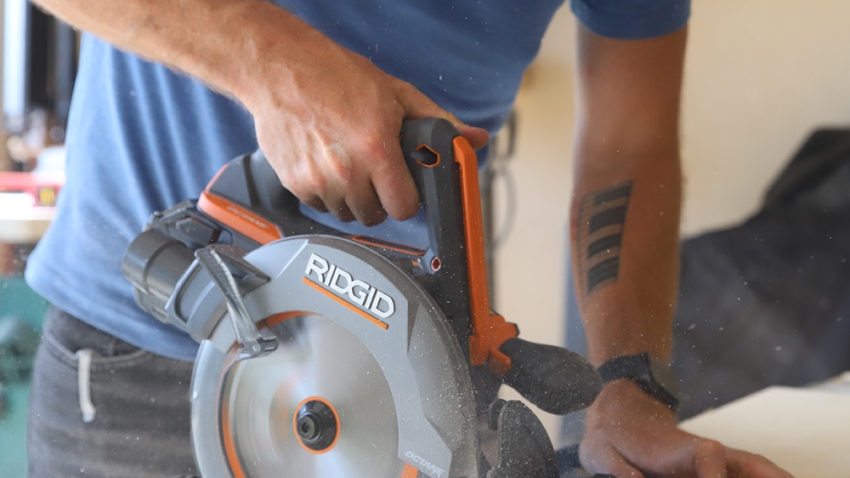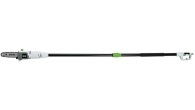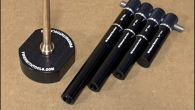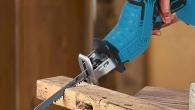
Circular Saw Explained: A Must-Have for DIY Projects
Introduction to Circular Saws
Circular saws are a staple in both construction and DIY worlds. A circular saw uses a toothed or abrasive disc or blade to cut different materials. It rotates around an arbor and makes quick, precise cuts. People use circular saws for a range of projects. They slice through wood, metal, and even concrete. They’re key for tasks like trimming lumber or breaking down sheet materials.
The design makes them versatile and efficient. They’re easy to operate for straight cuts and come in various styles. Their portability adds to their appeal. You can find circular saws as cordless models, which give even more freedom of movement. Whether you’re a professional or a hobbyist, knowing what is a circular saw and its functions can go a long way. It can help you choose the right one for your needs.
In the next section, we delve into the rich history of the circular saw, laying the groundwork to understand its evolution and importance in today’s tool industry.
History of the Circular Saw
Tracing its origins back to the 18th century, the circular saw’s development is steeped in history. The invention of the circular saw is typically credited to Samuel Miller who received a British patent in 1777. Although the patent suggests that circular blades may have existed prior, it was his sawing mechanism that marked a significant innovation in woodworking technology.
In early America, a Shaker woman named Tabitha Babbitt observed the inefficiency of traditional sawing methods. In 1810, she invented her own version of a circular saw. Her design stemmed from witnessing the laborious use of a pit saw, which only cut on the forward stroke. Babbitt’s solution was to attach a notched tin disk to her spinning wheel, capitalizing on continuous motion to enhance efficiency and reduce effort.
This improvement led to the circular saw’s widespread use in sawmills. Early models, driven by a treadle, mirrored the spinning wheel with its continuous motion. Over time, enhancements in technology have led to the development of portable circular saws and more sophisticated table saws. They feature powerful motors and safety advancements that significantly reduce the risk of injury. The saw’s evolution continued with Raymond Dewalt’s radial arm addition in 1922, enabling greater control, and it was later revolutionized by Art Emmons’ handheld circular saw in 1929.
Through its history, the circular saw has been refined from a rough concept into a precision tool essential in many industries. Whether it’s used in sawmills, construction sites, or DIY projects, the circular saw’s significance remains as strong today as it was when first conceptualized over two centuries ago.
How Circular Saws Work
Understanding how a circular saw operates is key for both safety and efficiency. At its core, a circular saw uses a round, toothed blade that spins rapidly to slice through materials. This segment will shed light on the quintessential parts and functions that make a circular saw an indispensable tool.
A circular blade is the heart of the saw. Edged with sharp teeth, it cuts a variety of materials, from wood to metal. Each blade type is designed to match specific materials for optimal cutting performance. When the saw is activated, the motor powers the blade, causing it to spin.
To ensure a clean cut, the depth and angle of the saw are adjustable. Setting the correct depth means that the blade will slice all the way through the material without unnecessary excess. This precision prevents damage to the material beneath. The angle adjustment allows the user to make cuts that are not perpendicular to the material, like bevel cuts.
In terms of operation, you must first align the saw’s guide notch with the cutting line. Once aligned, gently push the saw forward while maintaining control. The saw should glide smoothly as the blade’s rotation does the work.
For handheld circular saws, right-handed or left-handed equipment design facilitates ease of use. This means the saw’s design caters to the dominant hand of the user, ensuring better visibility and comfort during the cutting process.
Remember, how a circular saw works and how well it performs depends greatly on using the correct blade type and operational technique. Proper setting and usage lead to efficient, clean cuts every time, showcasing why knowing what is a circular saw is imperative for anyone in construction or undertaking a DIY project.

Types of Circular Saws and Their Uses
Circular saws come in various designs, each suited to different tasks. Here’s a brief overview of the common types and their uses:
Sidewinder Circular Saws
These are the standard circular saws most people recognize. Sidewinders have a high RPM motor located alongside the blade. They’re lightweight and ideal for many cutting jobs. Perfect for DIY projects, sidewinders excel in cutting through plywood, softwood, hardwood, and medium-density fiberboards.
Worm Drive Circular Saws
Worm drive saws have a motor positioned behind the blade, offering up increased torque. They’re designed for heavy-duty tasks. They power through wet lumber and concrete with relative ease. Their long body and positioning allow for better reach and visibility during rip cuts.
Hypoid Circular Saws
Hypoid saws are similar to worm drives but with a sealed motor system, eliminating the need for oil changes. They deliver more power and torque, making them suitable for intense, professional construction tasks. Hypoid saws work well for cutting through thick, dense materials.
Compact and Mini Circular Saws
These smaller saws provide portability and maneuverability. Compact and mini saws are the go-to for quick, light jobs. They easily cut through thin materials and are perfect for users who need a one-handed tool that’s less intimidating than full-sized models.
Cordless Circular Saws
Cordless models offer freedom of movement and are not limited by the reach of a power cord. Although they might not have the sustained power of corded models, they’re ideal for work where electricity is not accessible or for quick, short cuts. They are best for small to medium-sized projects.
Table Saws (Circular Blade)
Table saws incorporate a circular blade in a stationary setup. They deliver precise cuts and are most often found in workshops. Great for rip cuts, crosscuts, and bevels in wood, they are a staple for accuracy and volume cutting.
Each circular saw type brings distinct advantages to the table. When choosing, consider the material, project size, and the power needed. Understanding what is a circular saw and its varieties ensures the right tool is in hand for effective and safe cutting.

Innovations in Circular Saw Design
The circular saw has seen remarkable advancements since its inception. Motor efficiency has greatly improved, allowing for smoother and faster cuts. Earlier models were limited by the power source and motor bulk, but now, lightweight and potent motors are standard.
Blade technology too has evolved. Modern blades come with various tooth designs tailored to specific materials. This results in cleaner, more precise cuts. Carbide-tipped blades extend the tool’s life and maintain sharpness longer.
A notable development is the laser guide feature. This provides a clear visual line to follow, improving accuracy. For those wondering what is a circular saw’s best aid for straight cuts, a laser guide is the answer.
Cordless technology has changed the game. Modern circular saws offer the convenience of no cords, which means greater mobility and no fuss with tangled cables or proximity to power outlets.
The introduction of the brushless motor marks another leap forward. These motors offer greater longevity and require less maintenance than their brushed counterparts, not to mention the increase in power efficiency.
Lastly, ergonomic designs have made circular saws more comfortable and safer to handle. Manufacturers now focus on grip comfort and control to reduce user fatigue and improve the cutting experience.
As tools evolve, so must the user’s understanding. Knowing what is a circular saw capable of in its latest form can empower DIYers and professionals alike to tackle more complex projects with ease.
Safety Features of Modern Circular Saws
Modern circular saws boast a range of safety features that reduce the risk of accidents. Understanding these features is key when evaluating what is a circular saw capable of in terms of user protection. Here’s an overview of the foremost safety advancements in present-day circular saws:
- Blade Guards: Most circular saws come with a blade guard that covers the blade when not in use. The guard automatically retracts when you make a cut, then snaps back once you’re done, shielding you from the sharp edges.
- Automatic Brake: This safety mechanism stops the blade quickly once the trigger is released. This reduces the time it takes for the spinning blade to come to a complete stop, lessening the likelihood of injury.
- Lock-Off Trigger: To prevent unintended starts, many saws feature a lock-off trigger. You must engage the lock before you can activate the saw, offering an extra layer of safety.
- Anti-Kickback Features: Kickback occurs when a saw blade binds in the material you’re cutting. Advanced saws have mechanisms to lessen this force that could otherwise lead to loss of control.
- Riving Knives and Splitters: Included on table saw models, these parts help to keep a cut open and prevent the saw blade from pinching, which is another cause of kickback.
- Safety Clutches: Found in some high-end models, safety clutches disengage the blade if it binds or encounters resistance, providing additional protection against kickback.
- Electric Blade Stops: Some of the latest circular saws can detect contact with skin and stop the blade nearly instantly to prevent serious injury.
These features have transformed the circular saw from a potentially dangerous tool into one that is much safer to use. Always read and follow the manufacturer’s guidelines to maximize the effectiveness of the safety features. Remember, the most important safety measure is the user’s adherence to proper handling and operation. Knowing what is a circular saw designed to do safely is the first step towards a secure and productive work environment.

Choosing the Right Circular Saw for Your Project
Selecting the right circular saw is crucial for your project’s success. Consider these factors for a smart choice:
- Assess the Material: Match the saw to your project’s material. Harder materials may require more powerful saws.
- Consider the Power Source: Choose between corded for steady power or cordless for mobility.
- Select the Right Blade Type: The blade should suit the material, whether wood, metal, or plastic.
- Look at the Saw Design: Sidewinder, worm drive, hypoid, consider which design offers the control you need.
- Think About Size and Weight: A lightweight saw means easier handling, crucial for long projects.
- Check Safety Features: Ensure it has a blade guard, electric brake, and other safety mechanisms.
- Decide on Portability: If working in various locations, a compact or cordless saw is ideal.
By reflecting on these criteria, you can make an informed purchase. Knowing what is a circular saw tailored to your needs will guide you to the right type, power, and safety features. Remember, the best saw is the one that helps you work effectively and safely on your specific project.
Maintenance and Care for Circular Saws
Ensuring that your circular saw remains in top working condition involves regular maintenance and care. By looking after your circular saw, you can extend its lifespan, improve its performance, and maintain safety standards. Here are key steps to maintain and care for your circular saw.
- Clean the Saw: After use, wipe down the saw to remove dust and debris. A clean saw prevents buildup that can hamper the tool’s function.
- Check the Cord: For corded saws, inspect the cord for signs of wear or damage. Replace it if necessary to prevent electrical hazards.
- Sharpen the Blade: A dull blade makes cutting inefficient and can be dangerous. Sharpen the teeth or replace the blade when it begins to wear.
- Lubricate Moving Parts: Apply appropriate lubricant to moving parts like the blade arbor to ensure smooth operation.
- Inspect the Blade Guard: Confirm that the blade guard retracts and snaps back properly. A malfunctioning guard can be a safety risk.
- Test the Battery: For cordless saws, regularly check the battery’s charge capacity. Replace batteries that don’t hold a charge as they should.
- Storage: Store the saw in a dry, dust-free environment. Exposure to moisture and dust can corrode parts.
- Regular Checks: Periodically review the saw’s components, such as base plate, bevel adjustment, and depth setting, for alignment and accuracy.
By following these simple maintenance and care procedures, you ensure your circular saw is reliable when you need it. What is a circular saw but a durable and precise tool given proper care? Keep it well-maintained, and it will be a dependable asset for years to come.












Leave a Reply